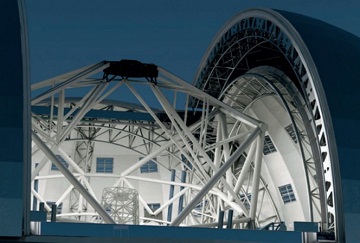
[Image:ESO]
On Friday, Michelle Bachelet, the President of Chile, inaugurated the construction of the European Extremely Large Telescope (E-ELT), the world’s largest optical telescope that will be located on mountain in the middle of the Atacama desert and will start operating in 2024.
“What is being raised here is more than a telescope. Here we see one of the greatest examples of the possibilities of science,” said Chilean President Michelle Bachelet in a speech while inaugurating the construction of E-ELT.
“Here in the Atacama Desert, one of the most symbolic places of the nation – and the driest place in the world – we are doing more than build a telescope, we are witnessing one of the greatest examples of what science and technology can achieve,” Bachelet said.
One of the most amazing features of EELT is its main mirror that will measure about 39 meters in width. This large mirror will allow the telescope to absorb about 13 times more light that the existing largest telescope in the world. E-ELT will be able to spot even small planets and will produce 16 times more sharper images than Hubble’s images. It will also help astronomers characterize the atmosphere of these exoplanets and determine the possibility of life there.
Atacama Desert has been selected as the location of E-ELT just because of the dry atmosphere of this region, which offers just perfect conditions for observing the Universe.
The E-ELT is being funded by the European Southern Observatory (ESO). Based on 2012 prices, this project will cost around 1 billion euros.
“The E-ELT will vastly advance astrophysical knowledge by enabling detailed studies of planets around other stars, the first galaxies in the Universe, super-massive black holes, and the nature of the Universe’s dark sector,” ESO said on its website.
Last year, ESO signed a €400 million contract with ACe Consortium for construction of E-ELT dome and telescope structure. The contract covered the design, manufacture, construction, on-site assembly and verification of the dome and telescope structure. This was the largest contract ever awarded in ground-based astronomy.